Application of the Fractional Riccati Equation for Mathematical Modeling of Dynamic Processes with Saturation and Memory Effect
Abstract
:1. Introduction
- comparison is rarely made between experimental data of processes with saturation and calculated data on a mathematical model;
- the order of the fractional derivative is often constant, which may not be enough for our purposes;
- the issues related to the numerical solution of the fractional Riccati equation with variable fractionality of the derivative are poorly studied.
2. Some Definitions of Fractional Calculus and Hereditarity, and Their Mutual Connection
3. Formulation of the Problem
4. Solution Method
- For the numerical solution of the Cauchy problem (5), nonlocal numerical schemes are proposed: EFDS and IFDS. To solve IFDS, the MNM method is considered with a modification according to (6);
- Questions about the stability, convergence of methods and approximations of a fractional operator are considered. The corresponding theorems are proved;
- It is established that: IFDS is unconditionally stable and has order of convergence , where , EFDS—conditionally (for ) is stable and has order convergence ;
- Test examples and estimates of the accuracy of calculations according to the Runge rule confirm the theoretical conclusions;
- From the set of test cases, it appears that the IFDS scheme has a maximum error that is an order of magnitude smaller than that of EFDS. Moreover, IFDS is somewhat more accurate than EFDS.
- If the coefficients in the model equation vary by harmonic law, their form resembles the form of curves for vibrational processes;
- It can be seen from the figures that the calculated curves for the proposed model can have an s-shaped shape, which is typical for dynamic processes in saturated media;
- It is also seen that the trend of the calculated curves increases as the steady state is reached;
- This dynamic occurs in the economy when describing cycles and crises [37].
5. Software Package for MAPLE
5.1. Pluggable Subprograms
5.2. Processing of Input Data
5.3. Approximation of the First Data Set
- numerical_method :: string—(optional) numeric scheme, default: "IFDS". According to the Section 4, the EFDS and IFDS schemes are implemented;
- start_iter_MNM :: string—(optional) method for calculating start iteration for IFDS scheme, see Remark 6, default: "Last_EFDS";
- type operator :: string—(optional) modification type for fractional operator (3), default: "alpha(t)";
- set_N :: integer—number of nodes of the calculated uniform grid;
- set_T :: integer—simulation time;
- start_point :: anything—start point, initial value of the Cauchy problem;
- acccuracy :: float—(optional) required accuracy of numerical method, default: "10^(-4)";
- info_print :: string—(optional) flag for outputting intermediate information about the calculation progress, default: "No";
- graphics_print :: string—(optional) flag for outputting intermediate graphic information, default: "No".
5.4. Forecasting Process Behavior
5.5. Checking the Forecast on the Second Data Set
5.6. <<RVAMM>> Library, and RVA Simulation
- A_0_local :: anything—parameter ;
- A_max_local :: anything—parameter , due to normalization always ;
- lambda_0 :: anything—parameter ;
- set_N :: integer—number of nodes of the calculated uniform grid;
- set_T :: integer—simulation time;
- LambdaAnalysisRVA()—the range and step of changing the parameter are specified in the arguments, and using MakarovModelRVA() it calculates a number of solutions, from which the best one is selected by the best correlation coefficient with the given experimental data value ;
- AlphaConstAnalysisRVA()—sets the range and step of changing the parameter, and using the ApproxFractDeriv() function of the <<FDREext>> library, calculates a number of solutions, from which the best one is selected, according to the correlation coefficient, the value of .
- only one data file is processed for matching;
- only the approximation stage is used for this task, Section 5.3;
- to automatically override the parameter, LambdaAnalysisRVA() is used, and for the fractional model (5) parameter , AlphaConstAnalysisRVA() will be used, after which the approximation stage Section 5.3 starts again until the optimal parameters are found;
5.7. Notes on the Code Used to Simulation SA
- only one data file is processed for matching;
- only the approximation stage is used for this task Section 5.3;
- the parameters are redefined manually, after which the approximation stage Section 5.3 is started again until the optimal parameters are found.
6. Background to Modeling Processes with Saturation and Memory by the Fractional Riccati Equation
- these works mainly have a bias in the physical (real) modeling of the process, but with an attempt to preliminarily build a certain theoretical basis for verification;
- there are even fewer (or almost zero) similar studies for saturation processes and the memory effect;
- there are even fewer works, with a more mathematical bias, involving the apparatus of fractional differentiation and integration, numerical analysis, which would be more in line with the subject and direction of this study.
7. Simulation the Dynamics of Solar Activity
7.1. Formulation of the Problem
7.2. Numerical Experiment for SA
7.3. Comparison and Conclusions
7.4. Implementation of Research Results
- The Federal State Budgetary Institution of Science, the Institute of Cosmophysical Research and Radio Wave Propagation, Far Eastern Branch of the Russian Academy of Sciences, confirms that in the course of carrying out research work under the RFBR grant No. the program “MMDCSA program—mathematical modeling of the dynamics of solar activity cycles” and registered in Rospatent [39] on 25 December 2019 No. 2019667403.The program allows one to simulate the dynamics of solar activity at the stage of rise, to visualize the simulation. The fractional Riccati equation with derivatives of Gerasimov-Caputo fractional orders is taken as a model equation. With the help of a numerical algorithm, solutions of the model are obtained. The 23rd and 24th cycles of solar activity were studied, the model parameters were refined using experimental data, and it was shown that solar activity is decreasing.
- The Institute of Applied Mathematics and Automation, a branch of the Federal State Budgetary Scientific Institution “Federal Scientific Center” “Kabardino-Balkarian Scientific Center of the Russian Academy of Sciences”, confirms that when performing research work on the topic “Mathematical Modeling of the Processes of Geophysics and Physics of Elementary Particles” (No. AAAA -A19-119013190079-5) prepared and published the article [53] D. A. Tverdy “Non-local Cauchy problem for the Riccati equation with a fractional derivative as a mathematical model of solar activity dynamics”.The paper investigates a mathematical model of solar activity dynamics at the ascent stage, which is based on the Cauchy problem for the Riccati equation of fractional order. The solution obtained by Newton’s method is compared with observational data. It is shown that the proposed model is in good agreement with the dynamics of solar activity in the specified period, which allows the identification of trends and detection of memory effects.
8. Simulation the Dynamics of Infection with COVID-19
8.1. Review of Literature and Experimental Data of the Process
- the most part these are theoretical works, regarding the existence and uniqueness of a solution to a boundary value problem or the Cauchy problem, for model systems of differential equations, or with different definitions of fractional derivative operators, must be taken into account.;
- the mathematical models under consideration are both difficult to construct a numerical algorithm and further computer implementation;
- as a result, there are no comparisons between model results and experimental data on the COVID-19 epidemic.
- The Riccati equation, as shown in [50], can give good results for describing processes obeying the logistic law, to discover what might be true about the COVID-19 epidemic;
- variable orders of the fractional derivative will allow us to take into account how the effect of variable memory affects the dynamic system. This will allow modeling more complex ongoing epidemiological subprocesses and clarifying the mathematical model.
8.2. Numerical Experiments for COVID-19
8.3. Conclusions and Some Remarks
- the study uses a “phenomenological” approach to show the applicability of fractional calculus, in particular the fractional Riccati equation, to the description of processes of this kind;
- in each of the examples, the model curves were calculated for different variations in the values of the simulation parameters, from which the most appropriate combination was selected according to the maximum correlation coefficient with the experimental ones.
9. Simulation the Dynamics of Radon Volumetric Activity in the Accumulation Chamber
9.1. Formulation of the Problem
- the introduction of the fractional differential Riccati equation as a model for describing the process of radon accumulation, which will now allow us to take into account heredity, the memory effect of the process;
- introducing a nonlinear function into the model equation, which is responsible for the mechanisms of radon entry into the chamber.
9.2. Numerical Experiment for RVA
9.3. RVA Modeling Conclusions
10. Conclusions
11. Patents
Author Contributions
Funding
Institutional Review Board Statement
Informed Consent Statement
Data Availability Statement
Acknowledgments
Conflicts of Interest
Abbreviations
| VO | variable order |
| EFDS | Explicit Finite-difference Method |
| IFDS | Implicit Finite-difference Method |
| ONM | ordinary Newton Method |
| MNM | Modified Newton Method |
| UV | Ultraviolet |
| SA | Solar Activity |
| WHO | World Health Organization |
| SARS-CoV-2 | Severe acute respiratory syndrome-related coronavirus 2 |
| ICTV | International Committee on Taxonomy of Viruses |
| MERS | Middle East Respiratory Syndrome |
| COVID-19 | COronaVIrus Disease 2019 |
| CSSE | Center for Systems Science and Engineering |
| JHU | Johns Hopkins University |
| RVA | Radon Volumetric Activity (Bq/m3) |
| Rn | Radon |
| RFD | Radon Flux Density |
| AER | Air Exchange Rate |
References
- Callegaro, G.; Grasselli, M.; Pages, G. Fast Hybrid Schemes for Fractional Riccati Equations (Rough Is Not So Tough). Math. Oper. Res. 2020, 46, 221–254. [Google Scholar] [CrossRef]
- Izadi, M. Fractional polynomial approximations to the solution of fractional Riccati equation. Punjab Univ. J. Math. 2019, 51, 123–141. [Google Scholar]
- Taogetusang, S.; Li, S.-M. New application to Riccati equation. Chin. Phys. B 2010, 19, 080303. [Google Scholar] [CrossRef]
- Jeng, S.; Kilicman, A. Fractional Riccati Equation and Its Applications to Rough Heston Model Using Numerical Methods. Symmetry 2020, 12, 959. [Google Scholar] [CrossRef]
- Nazarov, V.E.; Kiyashko, S.B. Wave processes in media with inelastic hysteresis with saturation of nonlinear losses. Radiophysics 2016, 59, 124–136. (In Russian) [Google Scholar]
- Kurkin, A.A.; Kurkina, O.E.; Pelenovskij, E.N. Logistic models for the spread of epidemics (In Russian). Proc. NSTU Im. R. E. Alekseeva 2020, 129, 9–18. [Google Scholar]
- Volterra, V. Functional Theory, Integral and Integro-Differential Equations; Science: Moscow, Russia, 1982. [Google Scholar]
- Volterra, V. Sur les ‘equations int’egro-differentielles et leurs applications. Acta Math. 1912, 35, 295–356. [Google Scholar] [CrossRef]
- Uchajkin, V.V. Fractional Derivatives Method; Artichoke: Ulyanovsk, Russia, 2008; p. 510. (In Russian) [Google Scholar]
- Nahushev, A.M. Fractional Calculus and Its Applications; Fizmatlit: Moscow, Russia, 2003; p. 272. (In Russian) [Google Scholar]
- Ortigueira, M.D.; Machado, J.T. What is a fractional derivative? J. Comput. Phys. 2015, 321, 4–13. [Google Scholar] [CrossRef]
- Kilbas, A.A.; Srivastava, H.M.; Trujillo, J.J. Theory and Applications of Fractional Differential Equations; Elsevier Science Limited: Amsterdam, The Netherlands, 2006; Volume 204, p. 523. [Google Scholar]
- Uchaikin, V.V. Fractional Derivatives for Physicists and Engineers; Background and Theory; Springer: Berlin/Heidelberg, Germany, 2013; Volume I, p. 373. [Google Scholar]
- Ortigueira, M.D.; Valerio, D.; Machado, J.T. Variable order fractional systems. Commun. Nonlinear Sci. Numer. Simul. 2019, 71, 231–243. [Google Scholar] [CrossRef]
- Patnaik, S.; Hollkamp, J.P.; Semperlotti, F. Applications of variable-order fractional operators: A review. Proc. R. Soc. A R. Soc. Publ. 2020, 476, 20190498. [Google Scholar] [CrossRef] [PubMed] [Green Version]
- Coimbra, C.F.M. Mechanics with variable-order differential operators. Ann. der Phys. 2003, 12, 692–703. [Google Scholar] [CrossRef]
- Oldham, K.; Spanier, J. The Fractional Calculus Theory and Applications of Differentiation and Integration to Arbitrary Order; Academic Press: London, UK, 1974; p. 240. [Google Scholar]
- Ross, B. A brief history and exposition of the fundamental theory of fractional calculus. In Fractional Calculus and Its Applications; Springer: Berlin/Heidelberg, Germnay, 1975; pp. 1–36. [Google Scholar] [CrossRef]
- Pskhu, A.V. Uravneniya v Chastnyh Proizvodnyh Drobnogo Poryadka; Science: Moscow, Russia, 2005; p. 199. (In Russian) [Google Scholar]
- Mamchuev, M.O. Boundary Value Problems for Equations and Systems of Partial Differential Equations of Fractional Order; Publishing house KBSC RAS: Nalchik, Russia, 2015; p. 200, (In Russian). [Google Scholar] [CrossRef]
- Parovik, R.I. Mathematical Modeling of Linear Hereditary Oscillators; Kamchatka State University Named after Vitus Bering: Petropavlovsk-Kamchatsky, Russia, 2015; p. 187. (In Russian) [Google Scholar]
- Sweilam, N.H.; Khader, M.M.; Mahdy, A.M.S. Numerical studies for solving fractional Riccati differential equation. Appl. Appl. Math. 2012, 7, 595–608. [Google Scholar]
- Cai, M.; Li, C. Theory and Numerical Approximations of Fractional Integrals and Derivatives; Society for Industrial and Applied Mathematics: Philadelphia, PA, USA, 2020; p. 317. [Google Scholar] [CrossRef] [Green Version]
- Tverdyi, D.A.; Parovik, R.I. Investigation of Finite-Difference Schemes for the Numerical Solution of a Fractional Nonlinear Equation. Fractal Fractional 2021, 6, 23. [Google Scholar] [CrossRef]
- Tverdyi, D.A.; Parovik, R.I. Fractional Riccati equation to model the dynamics of COVID-19 coronovirus infection. J. Phys. Conf. Ser. 2021, 2094, 032042. [Google Scholar] [CrossRef]
- Tverdyi, D.A.; Parovik, R.I.; Makarov, E.O.; Firstov, P.P. Application of the Rikkati ereditary mathematical model to the study of the dynamics of Radon accumulation in the storage chamber. EPJ Web Conf. 2021, 254, 1–5. [Google Scholar] [CrossRef]
- Firstov, P.P.; Makarov, E.O. Dynamics of Subsoil Radon in Kamchatka and Strong Earthquakes; Kamchatka State University Named after Vitus Bering: Petropavlovsk-Kamchatsky, Russia, 2018; p. 148. (In Russian) [Google Scholar]
- Rekhviashvili, S.S.H.; Pskhu, A.V. Fractional oscillator with exponential-power memory function. Lett. J. Tech. Phys. Phys.-Tech. Inst. A. F. Ioffe RAS 2022, 7. (In Russian) [Google Scholar] [CrossRef]
- Gerasimov, A.N. Generalization of linear deformation laws and their application to internal friction problems. USSR. Appl. Math. Mech. 1948, 12, 529–539. [Google Scholar]
- Caputo, M. Linear models of dissipation whose Q is almost frequency independent–II. Geophys. J. Int. 1967, 13, 529–539. [Google Scholar] [CrossRef]
- Caputo, M. Elasticita e Dissipazione; Zanichelli: Bologna, Italy, 1969; p. 150. [Google Scholar]
- Tvyordyj, D.A. Hereditary Riccati equation with fractional derivative of variable order. J. Math. Sci. 2021, 253, 564–572. [Google Scholar] [CrossRef]
- Parovik, R.I.; Tverdyi, D.A. Some Aspects of Numerical Analysis for a Model Nonlinear Fractional Variable Order Equation. Math. Comput. Appl. 2021, 26, 55. [Google Scholar] [CrossRef]
- Parovik, R.I. On a finite-difference scheme for an hereditary oscillatory equation. J. Math. Sci. 2021, 253, 547–557. [Google Scholar] [CrossRef]
- Parovik, R.I. Mathematical modeling of linear fractional oscillators. Math. Model. Linear Fract. Oscil. 2020, 8, 1879. [Google Scholar] [CrossRef]
- Torres-Hernandez, A.; Brambila-Paz, F.; Iturrarán-Viveros, U.; Caballero-Cruz, R. Fractional Newton–Raphson Method Accelerated with Aitken’s Method. Axioms 2021, 10, 47. [Google Scholar] [CrossRef]
- Korotayev, A.V.; Grinin, L.E. Kondratieff waves in the world system perspective. In Kondratieff Waves. Dimensions and Prospects at the Dawn of the 21st Century; Uchitel: Volgograd, Russia, 2012; pp. 23–64. [Google Scholar]
- Tverdyi, D.A. Program for the Numerical Solution of the Cauchy Problem for the Fractional Riccati Equation with Non-Constant Coefficients and Variable Fractional Order Derivative FDRE 2.0; Certificate of State Registration of the Computer Program Holder; Vitus Bering Kamchatka State University: Kamchatka, Russia, 2021. [Google Scholar]
- Tverdyi, D.A. MMDCSA Program–Mathematical Modeling of the Dynamics of Solar Activity Cycles; Certificate of State Registration of the Computer Program Holder; Institute of Cosmophysical Research and Radio Wave Propagation FEB RAS: Kamchatka, Russia, 2019. [Google Scholar]
- Landis, C.M. On the strain saturation conditions for polycrystalline ferroelastic materials. J. Appl. Mech. 2003, 70, 470–478. [Google Scholar] [CrossRef]
- Pudeleva, O.A.; Semenov, A.S. Simulation of Saturation Processes in Polycrystalline Ferro-Piezo Ceramics. Conf. Proc. Week Sci. SPbPU 2016, 5, 98–101. (In Russian) [Google Scholar]
- Zhukov, S.A. On piezoceramics and the prospects for its application. World Eng. Technol. Int. Ind. J. 2009, 5, 56–60. (In Russian) [Google Scholar]
- Bayldon, J.M.; Daniel, I.M. Flow modeling of the VARTM process including progressive saturation effects. Compos. Part A Appl. Sci. Manuf. 2009, 40, 1044–1052. [Google Scholar] [CrossRef]
- Buraev, A.V. Some aspects of mathematical modeling of regional manifestations of solar activity and their relationship with extreme geophysical processes. Rep. Adyg (Circassian) Int. Acad. Sci. 2010, 12, 88–90. [Google Scholar]
- Therese, A.S. Generalized Logistic Models. J. Am. Stat. Assoc. 1988, 83, 426–431. [Google Scholar] [CrossRef]
- Rzkadkowski, G.; Sobczak, L. A generalized logistic function and its applications. Found. Manag. 2020, 12, 85–92. [Google Scholar] [CrossRef]
- Postan, M.Y. Generalized logistic curve: Its properties and estimation of parameters. Econ. Math. Methods 1993, 29, 305–310. (In Russian) [Google Scholar]
- Méhauté, A.L.; Nigmatullin, R.R.; Nivanen, L. Flèches du Temps et Géométrie Fractale; Hermes: Paris, France, 1998; p. 348. [Google Scholar]
- Mandelbrot, B.B. The Fractal Geometry of Nature; WH Freeman: New York, NY, USA, 1982; p. 468. [Google Scholar]
- Drozdyuk, A.V. Logistic Curve; Choven: Toronto, ON, Canada, 2019; p. 270. [Google Scholar]
- Feller, V. Physics of the Earth. Space Impacts on Geosystems, 2nd ed.; Yurayt: Moscow, Russia, 2021; p. 268. (In Russian) [Google Scholar]
- Sunspot Index and Long-Term Solar Observations. Royal Observatory of Belgium (ROB) Av. Circulaire, 3–B-1180 Brussels. Available online: http://www.sidc.be/silso/home (accessed on 15 August 2021).
- Tvyordyj, D.A. Nonlocal Cauchy Problem for the Riccati Equation with Fractional Order Derivative as a Mathematical Model of Solar Activity Dynamics. Proc. Kabard.-Balkar. Sci. Cent. Russ. Acad. Sci. 2020, 93, 57–62. (In Russian) [Google Scholar] [CrossRef]
- Chen, T.M.; Rui, J.; Wang, Q.P. A mathematical model for simulating the phase-based transmissibility of a novel coronavirus. Infect. Dis. Poverty 2020, 9, 1–8. [Google Scholar] [CrossRef] [Green Version]
- Alguliyev, R.; Aliguliyev, R.; Yusifov, F. Graph modelling for tracking the COVID-19 pandemic spread. Eurasian J. Clin. Sci. 2021, 3, 1–14. [Google Scholar] [CrossRef]
- Kumar, P.; Suat Erturk, V. A case study of Covid-19 epidemic in India via new generalised Caputo type fractional derivatives. Math Methods Appl. Sci. 2021. Available online: https://onlinelibrary.wiley.com/doi/10.1002/mma.7284 (accessed on 20 September 2021). [CrossRef] [PubMed]
- Ahmad, Z.; Arif, M.; Farhad, A.; Khan, I.; Nisar, K.S. A Report on COVID-19 Epidemic in Pakistan: An SEIR Fractional Model. Sci. Rep. 2020, 10, 1–14. [Google Scholar] [CrossRef] [PubMed]
- Mohammad, M.; Trounev, A. On the dynamical modeling of COVID-19 involving Atangana–Baleanu fractional derivative and based on Daubechies framelet simulations. Chaos Solitons Fractals 2020, 140, 110171. [Google Scholar] [CrossRef]
- Baleanu, D.; Mohammadi, H.; Rezapour, S. A fractional differential equation model for the COVID-19 transmission by using the Caputo–Fabrizio derivative. Adv. Differ. Equ. 2020, 299, 1–27. [Google Scholar] [CrossRef]
- Higazy, M.; Allehiany, F.M.; Mahmoud, E.E. Numerical study of fractional order COVID-19 pandemic transmission model in context of ABO blood group. Results Phys. 2021, 22, 103852. [Google Scholar] [CrossRef]
- Ndairou, F.; Torres, D.F.M. Mathematical Analysis of a Fractional COVID-19 Model Applied to Wuhan, Spain and Portugal. Axioms 2020, 10, 135. [Google Scholar] [CrossRef]
- Mohammad, M.; Trounev, A.; Cattani, C. The dynamics of COVID-19 in the UAE based on fractional derivative modeling using Riesz wavelets simulation. Adv. Differ. Equ. 2021, 2021, 115. [Google Scholar] [CrossRef] [PubMed]
- Yadav, R.P.; Verma, R. A numerical simulation of fractional order mathematical modeling of COVID-19 disease in case of Wuhan China. Chaos Solitons Fractals 2020, 140, 47. [Google Scholar] [CrossRef] [PubMed]
- Data on COVID-19 (Coronavirus) by Our World in Data. Center for Systems Science and Engineering (CSSE) at Johns Hopkins University (JHU). Available online: https://github.com/owid/covid-19-data/tree/master/public/dat (accessed on 4 September 2021).
- Ritchie, H.; Mathieu, E.; Rod’s-Guirao, L.; Appel, C.; Giattino, C.; Ortiz-Ospina, E.; Hasell, J.; Macdonald, B.; Beltekian, D.; Roser, M. Coronavirus Pandemic (COVID-19). Our World Data. 2020. Available online: https://ourworldindata.org/coronavirus (accessed on 4 September 2021).
- Makarov, E.O.; Firstov, P.P. Reaction of radon in soil and groundwater to stress-strain state of the Earth’s crust. Seism. Instrum. 2015, 51, 58–80. [Google Scholar]
- Cicerone, R.D.; Ebel, J.E.; Beitton, J. A systematic compilation of earthquake precursors. Tectonophysics 2009, 476, 371–396. [Google Scholar] [CrossRef]
- Parovik, R.I.; Shevtsov, B.M. Radon transfer processes in fractional structure medium. Math. Model. Comput. Simul. 2010, 2, 180–185. [Google Scholar] [CrossRef]
- Parovik, R.I. Mathematical modeling of radon sub diffusion into the cylindrical layer in ground. Life Sci. J. 2015, 11, 281–283. [Google Scholar]
- Tverdyi, D.A.; Parovik, R.I.; Makarov, E.O.; Firstov, P.P. Research of the process of radon accumulation in the accumulating chamber taking into account the nonlinearity of its entrance. E3S Web Conf. 2020, 196, 1–6. [Google Scholar] [CrossRef]
- Makarov, E.O.; Firstov, P.P.; Kostylev, D.V.; Rylov, E.S.; Dudchenko, I.P. First results of subsurface radon monitoring by network of points, operating in the test mode on the south of Sakhalin iseland. Vestn. KRAUNC Fiz.-Mat. Nauk. 2018, 5, 99–114. [Google Scholar] [CrossRef]
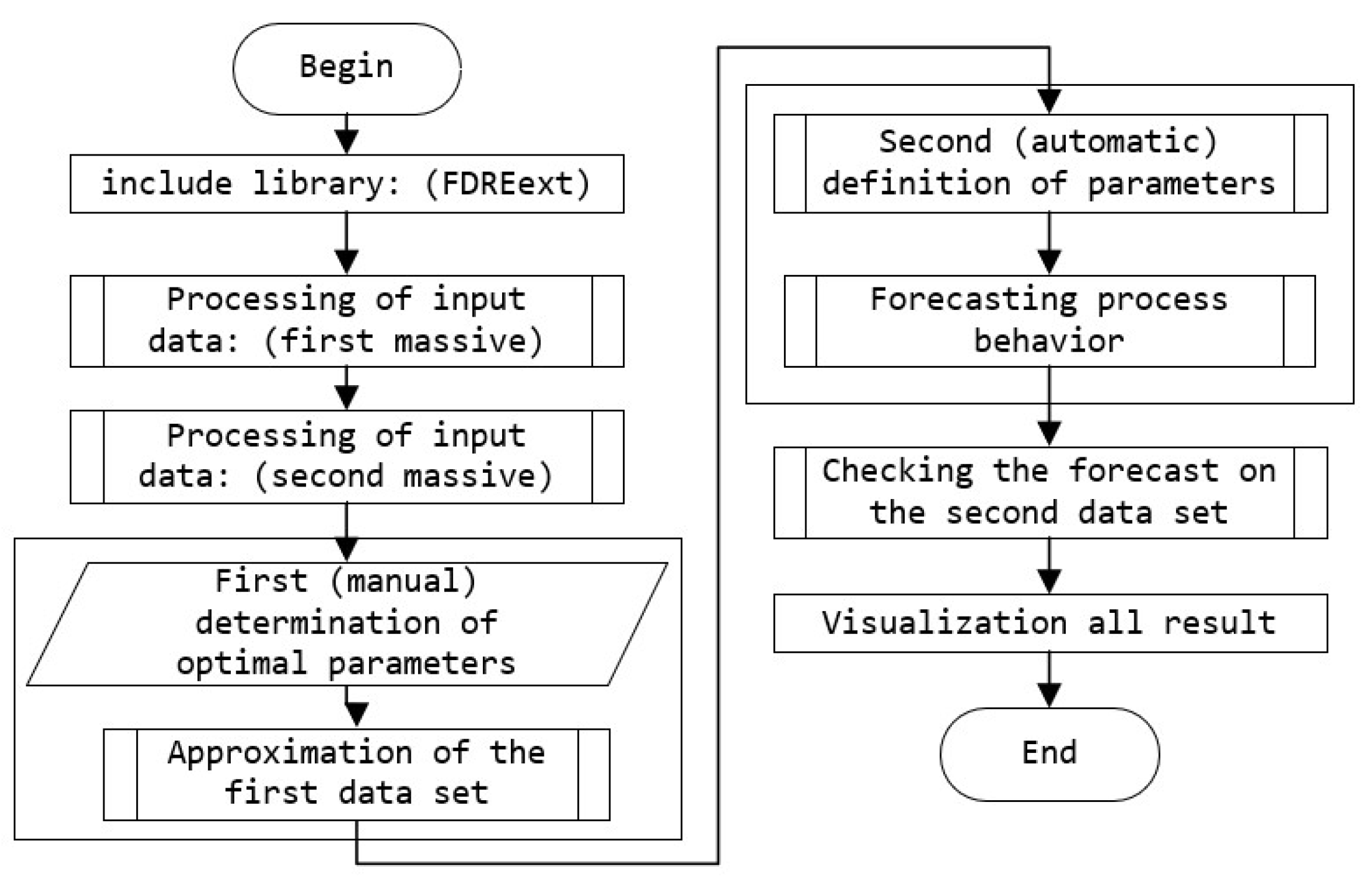


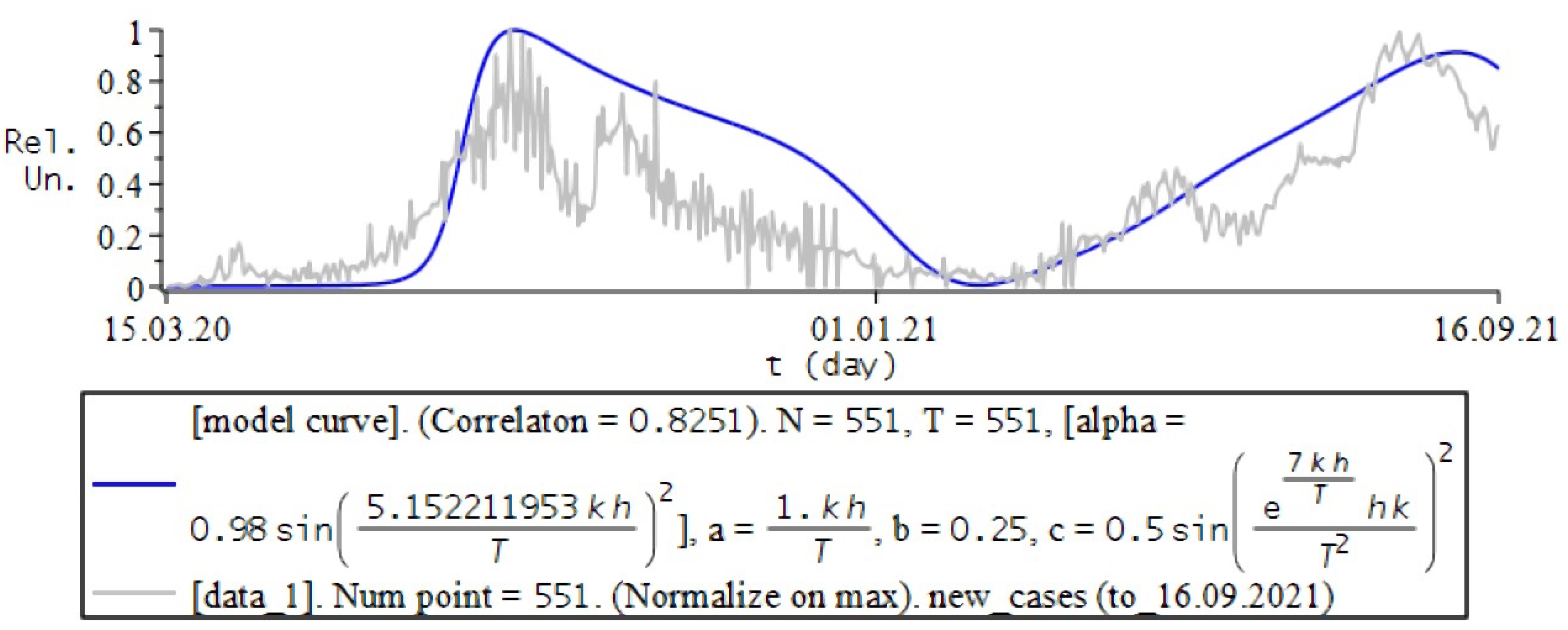
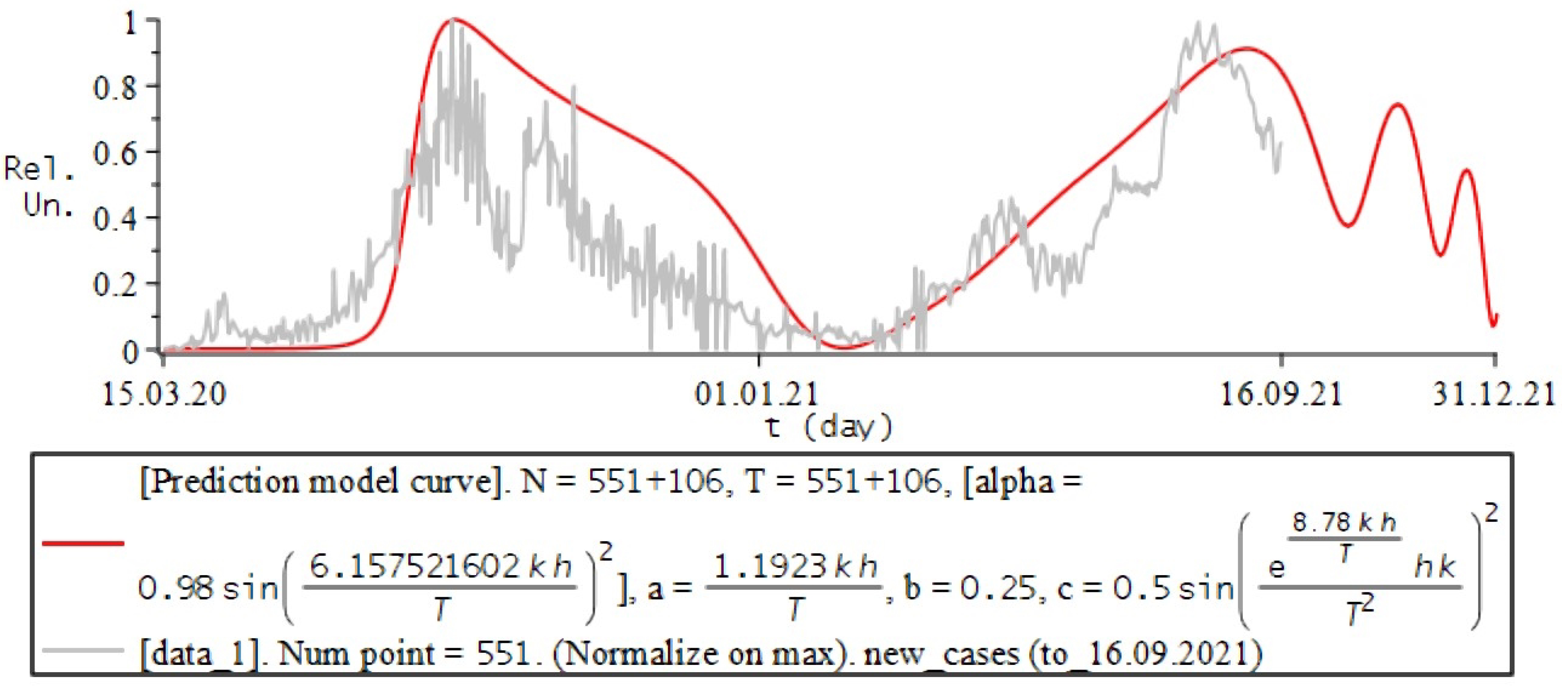


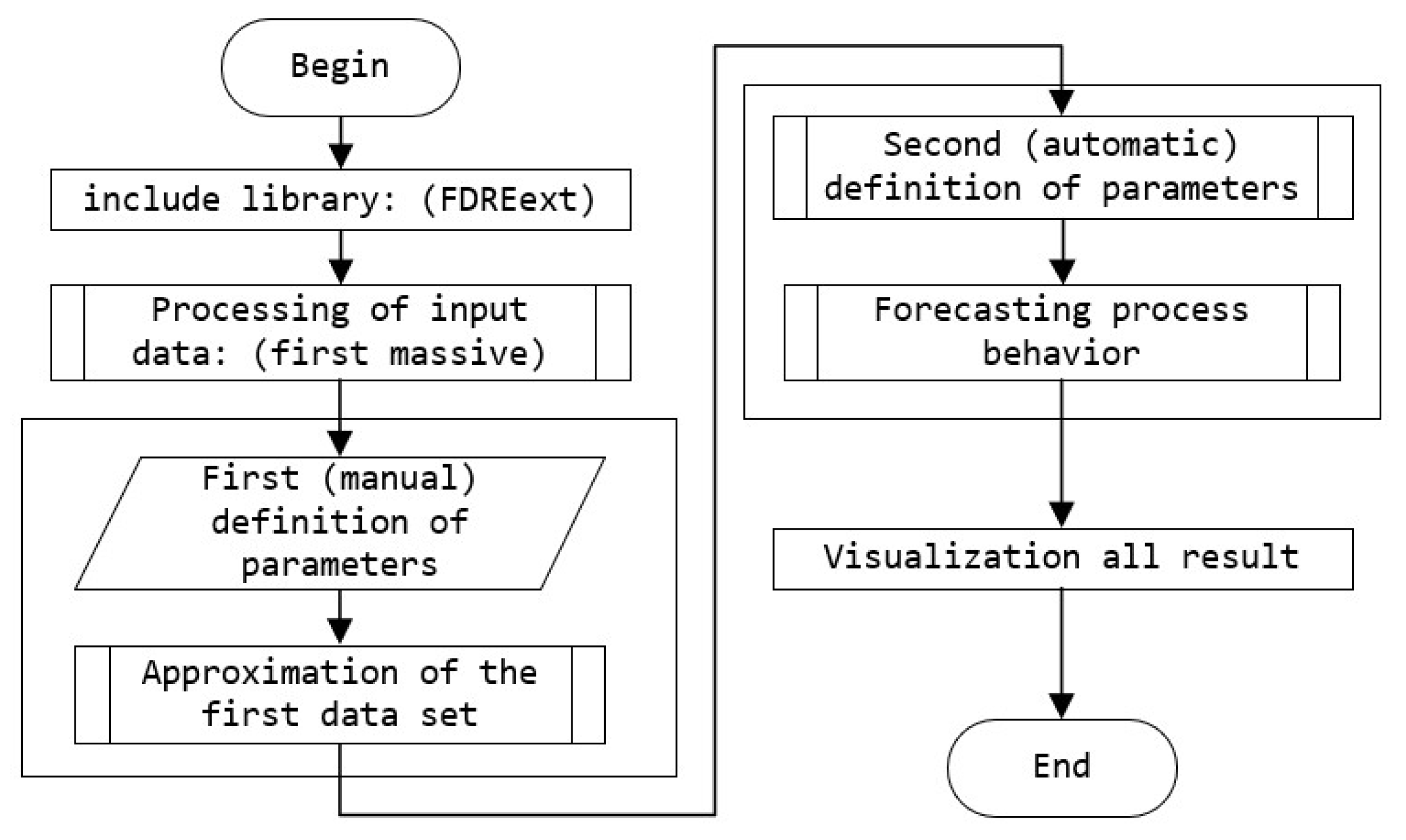

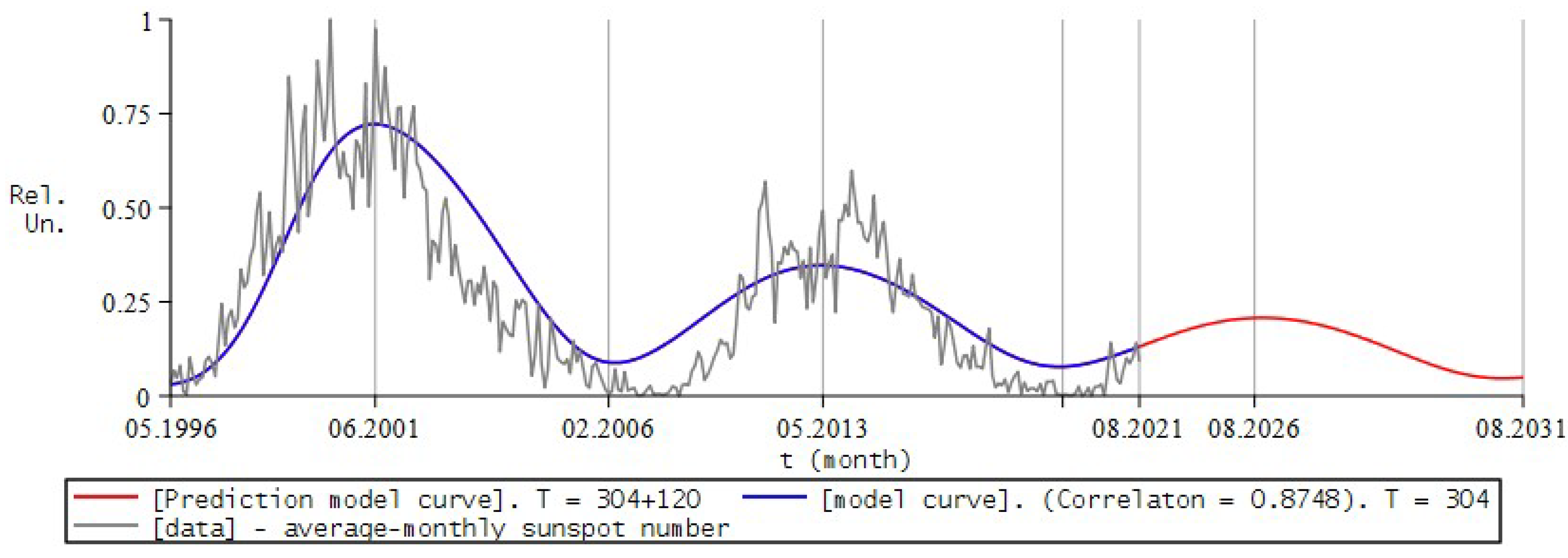

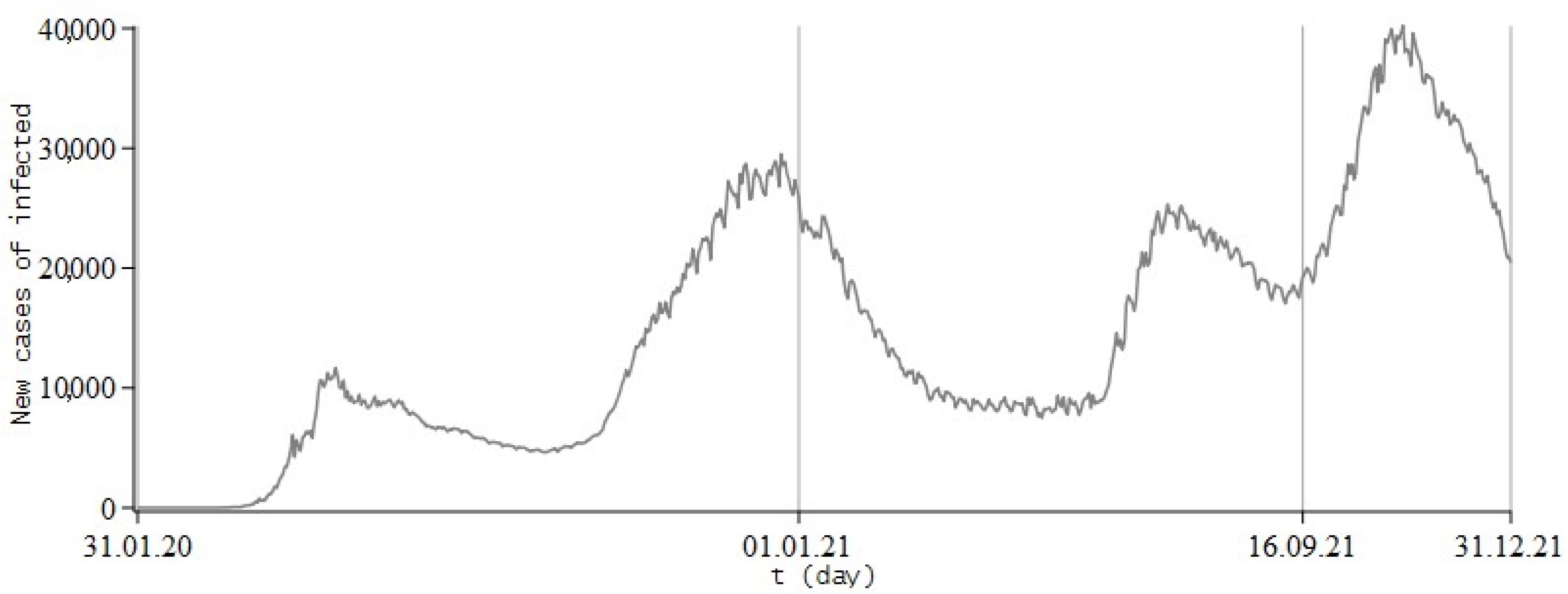
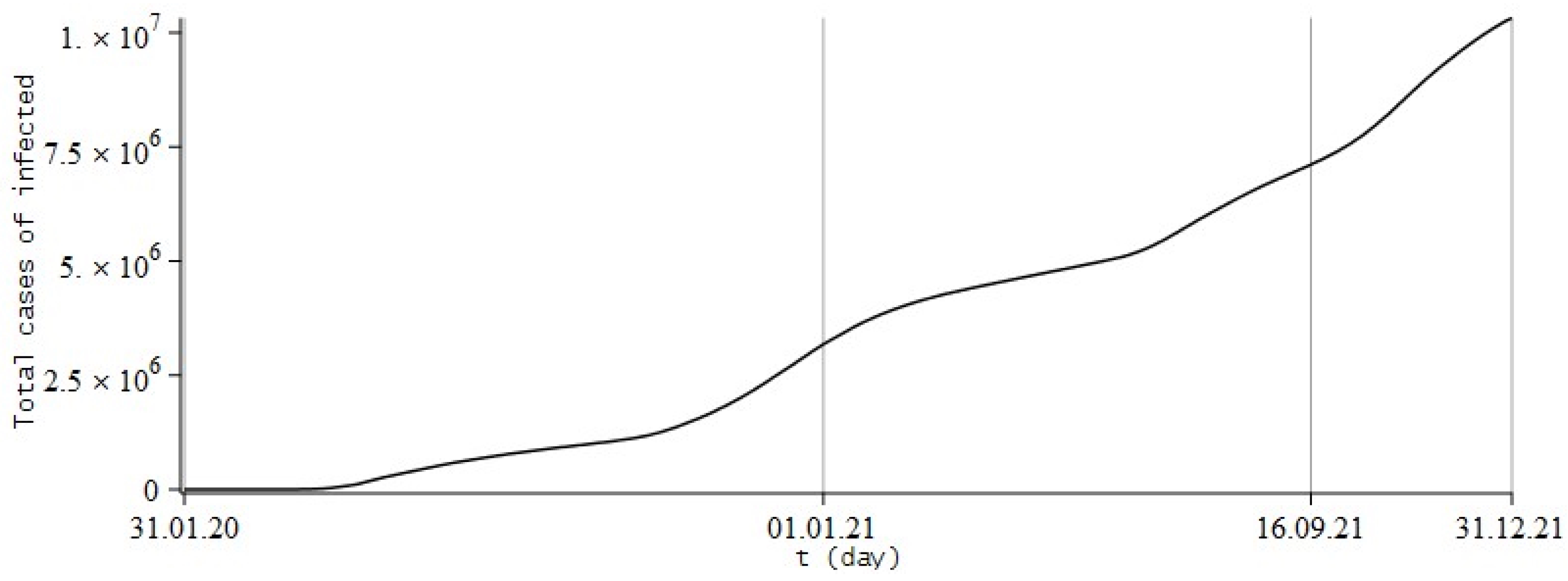
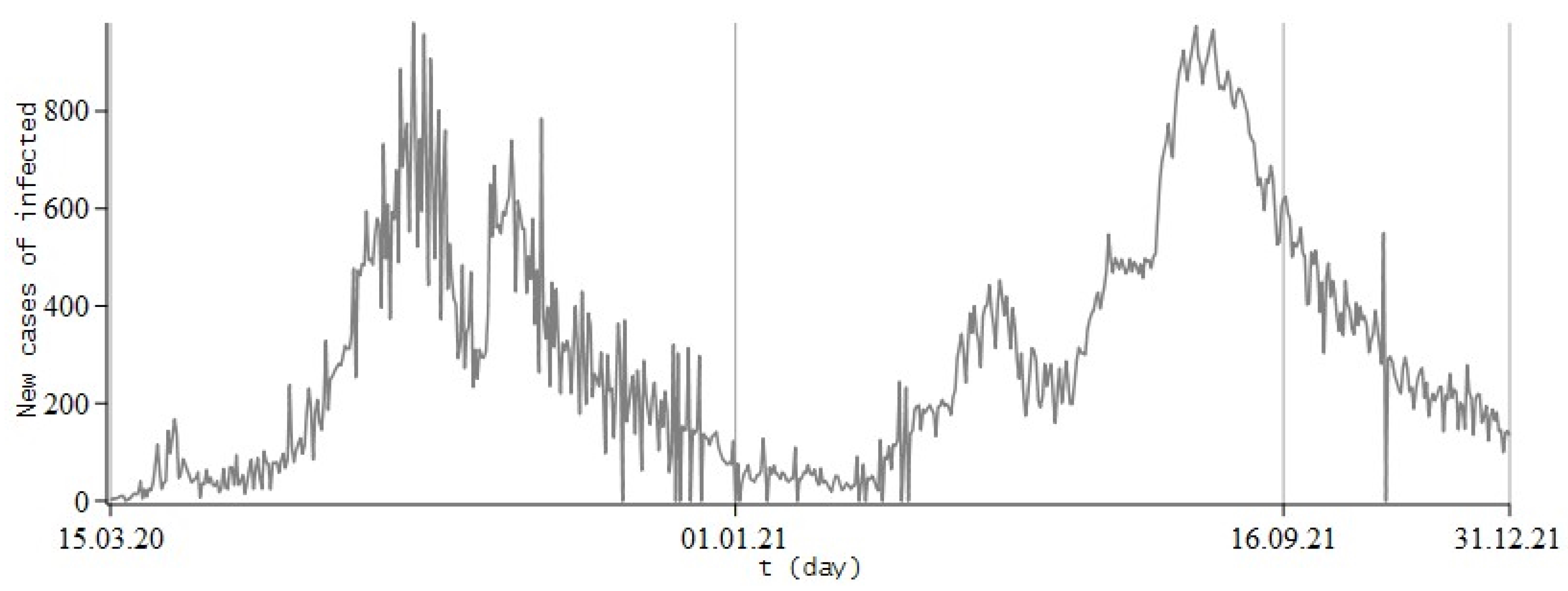

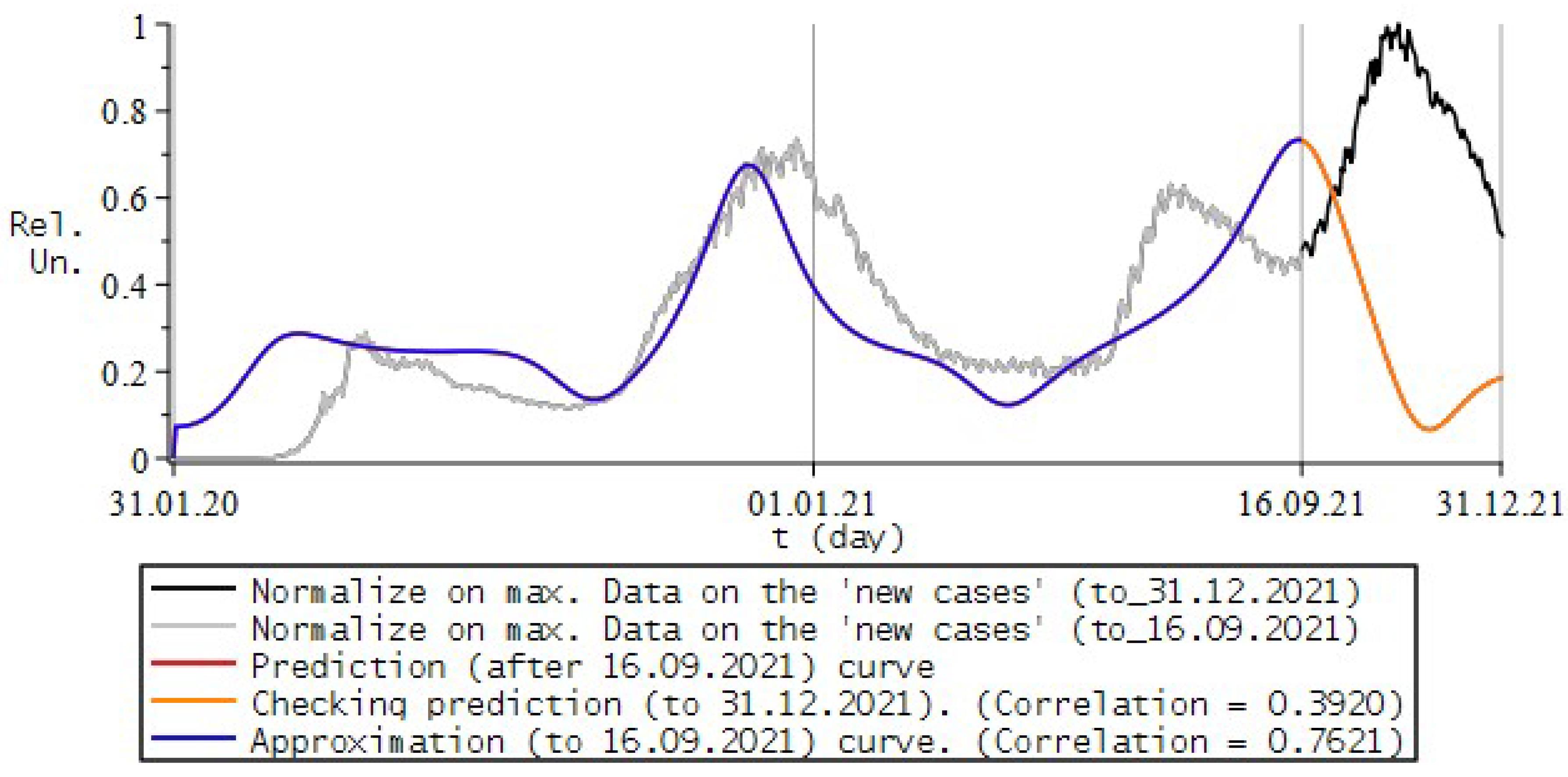
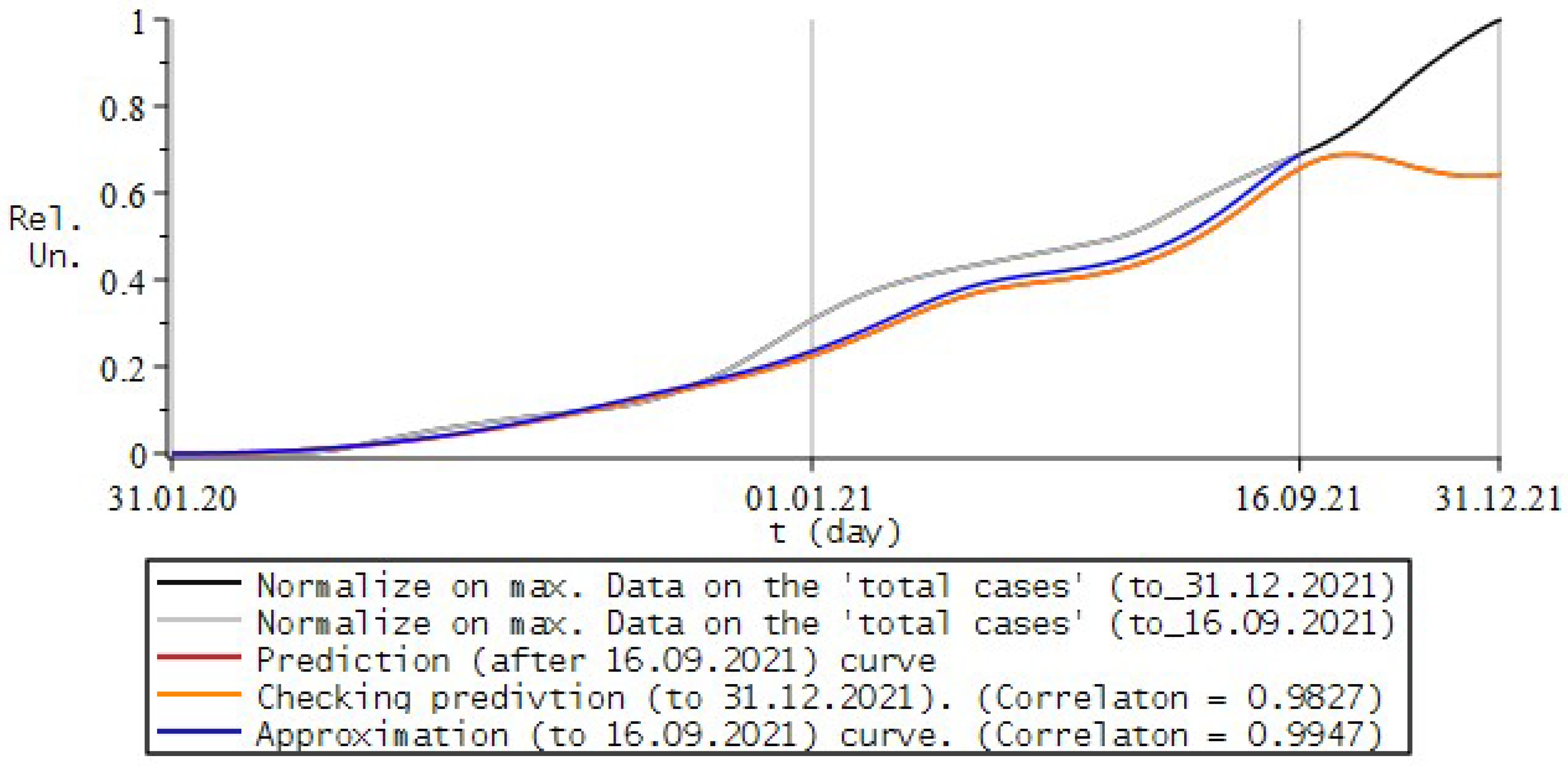
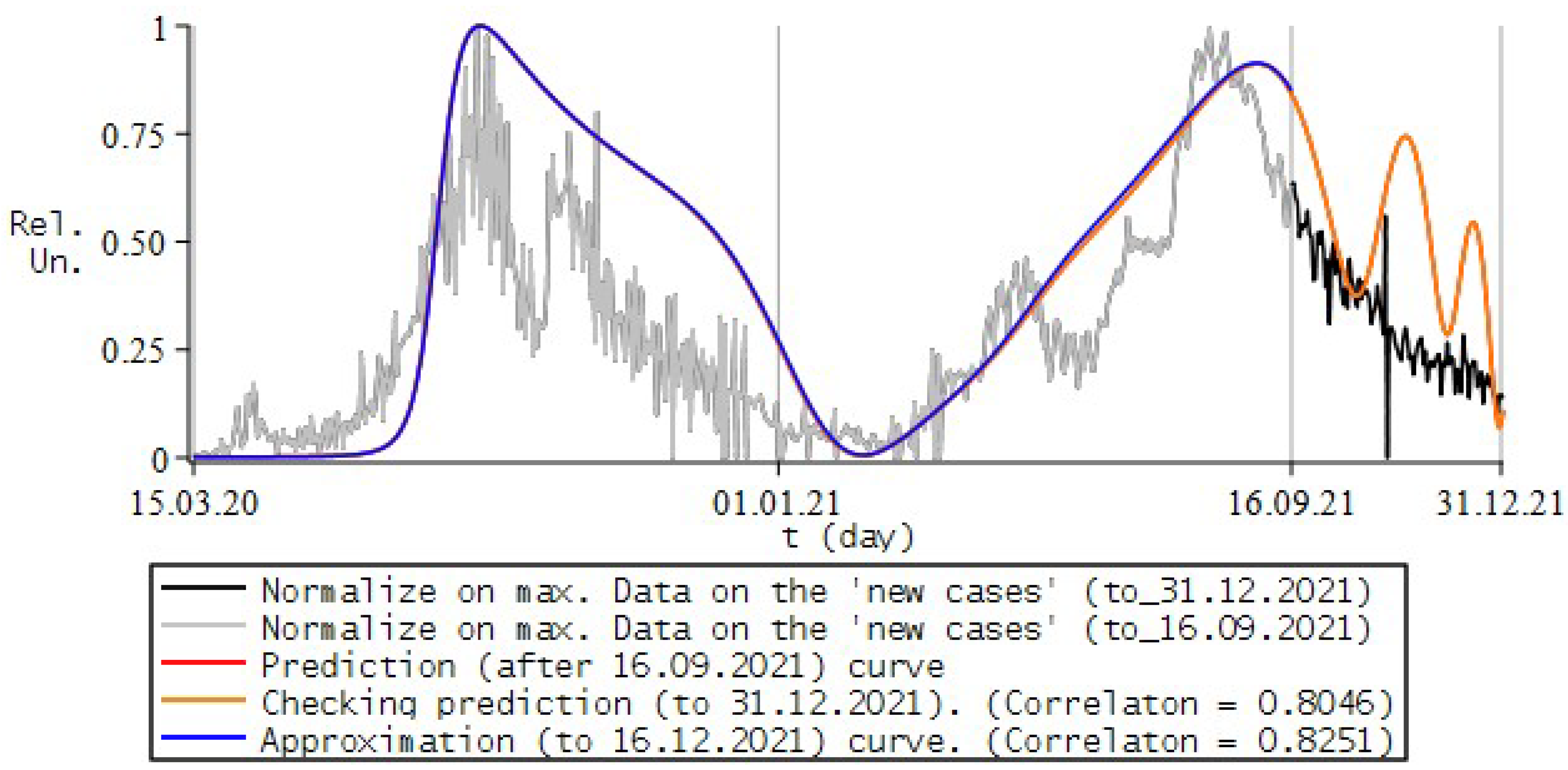
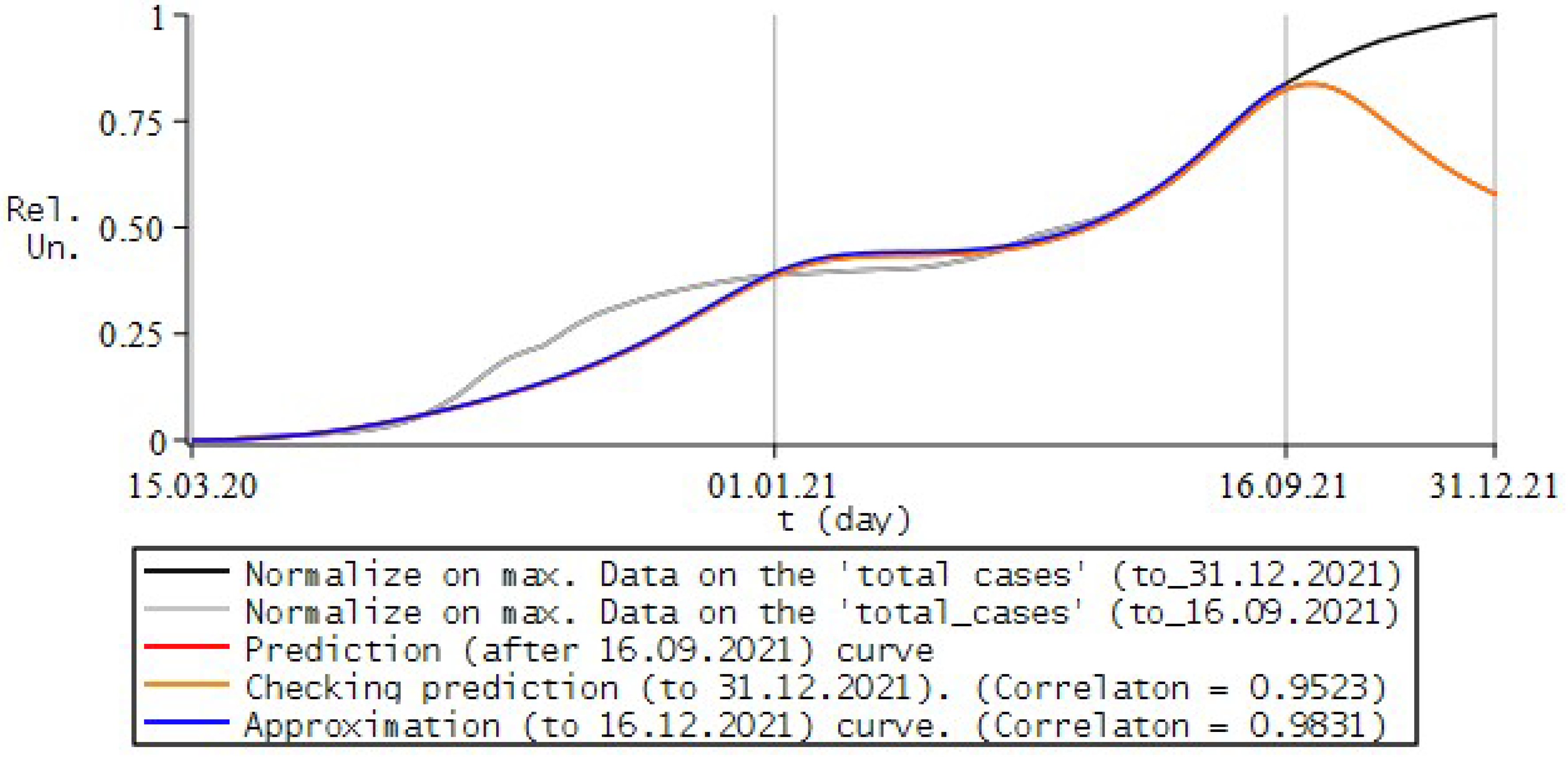


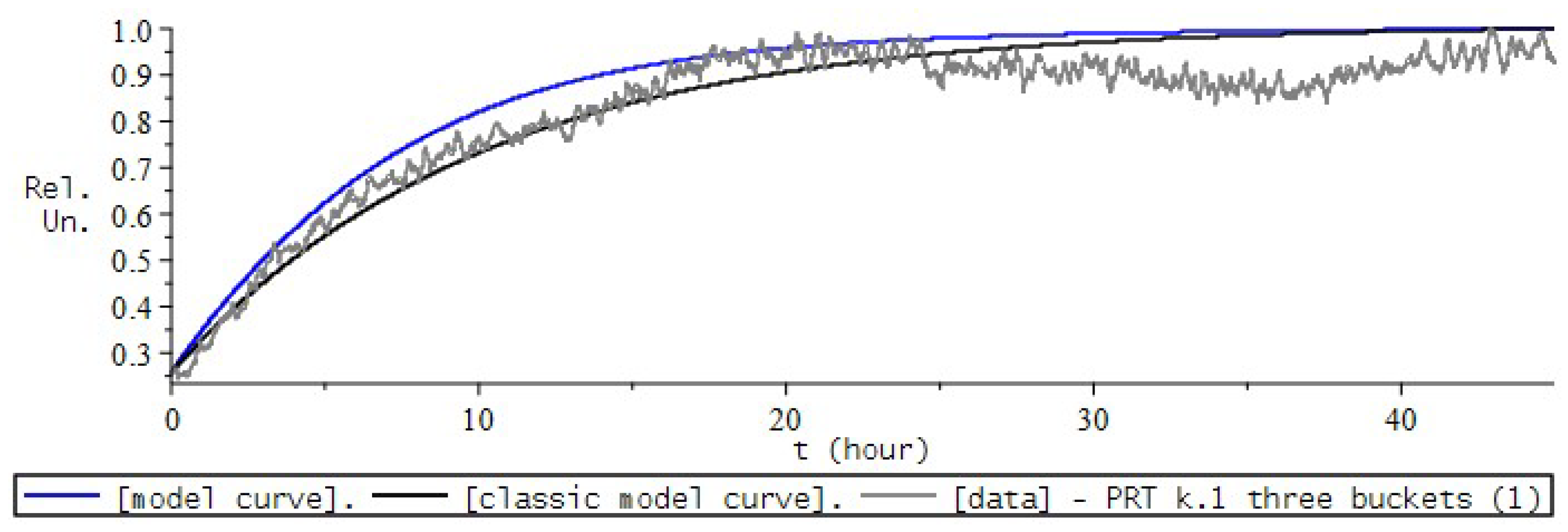
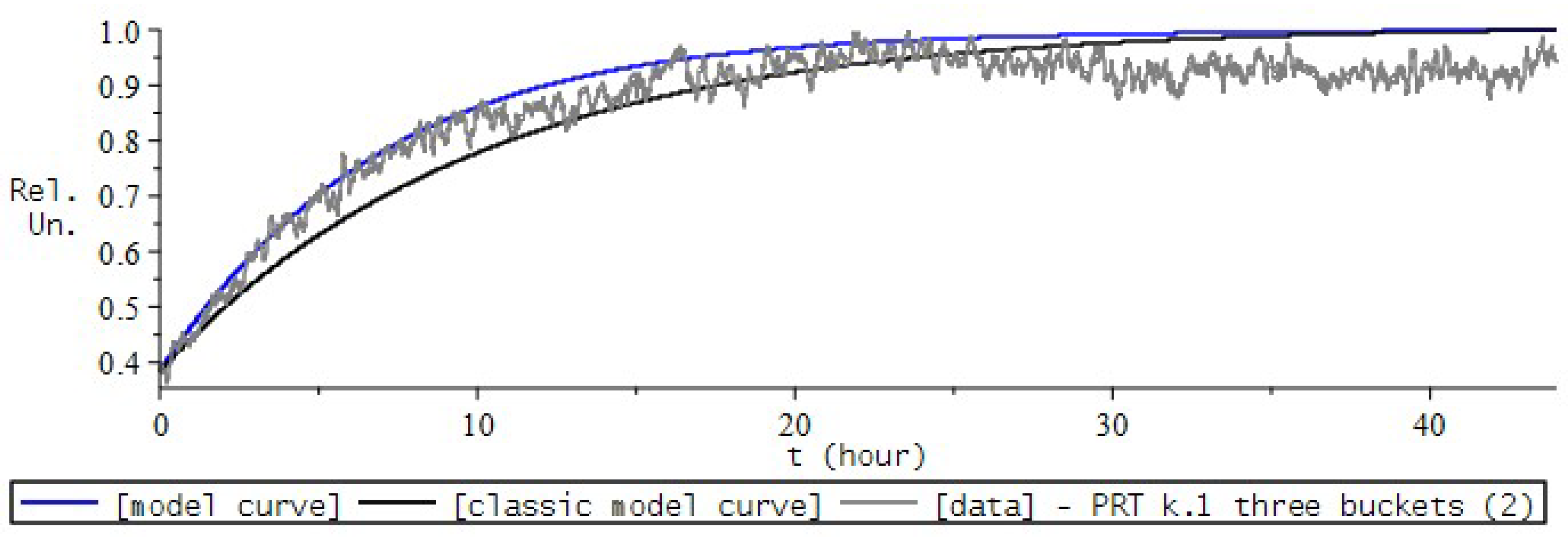


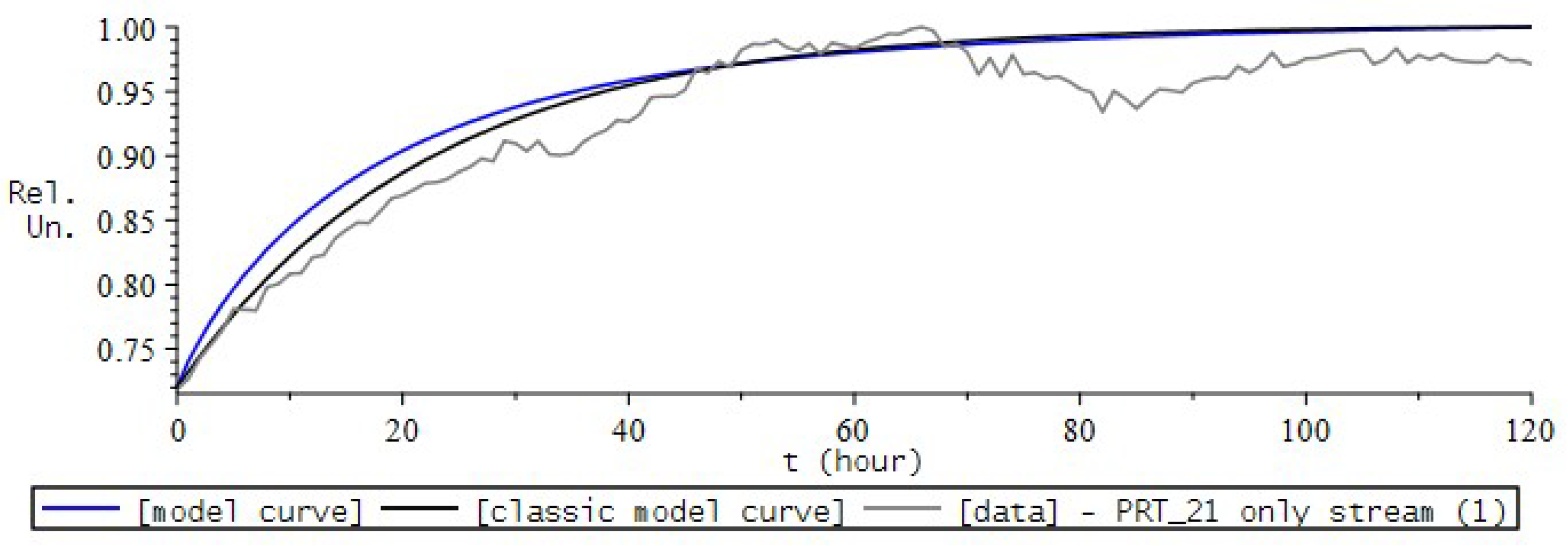
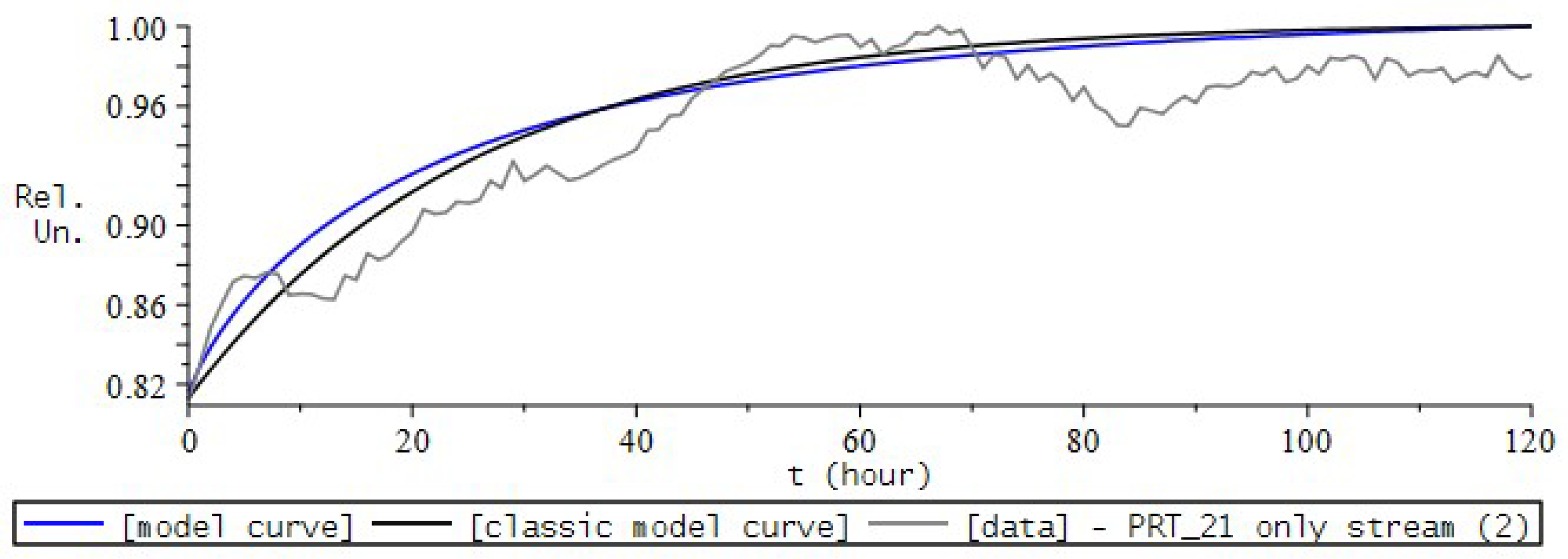


Publisher’s Note: MDPI stays neutral with regard to jurisdictional claims in published maps and institutional affiliations. |
© 2022 by the authors. Licensee MDPI, Basel, Switzerland. This article is an open access article distributed under the terms and conditions of the Creative Commons Attribution (CC BY) license (https://creativecommons.org/licenses/by/4.0/).
Share and Cite
Tverdyi, D.; Parovik, R. Application of the Fractional Riccati Equation for Mathematical Modeling of Dynamic Processes with Saturation and Memory Effect. Fractal Fract. 2022, 6, 163. https://doi.org/10.3390/fractalfract6030163
Tverdyi D, Parovik R. Application of the Fractional Riccati Equation for Mathematical Modeling of Dynamic Processes with Saturation and Memory Effect. Fractal and Fractional. 2022; 6(3):163. https://doi.org/10.3390/fractalfract6030163
Chicago/Turabian StyleTverdyi, Dmitriy, and Roman Parovik. 2022. "Application of the Fractional Riccati Equation for Mathematical Modeling of Dynamic Processes with Saturation and Memory Effect" Fractal and Fractional 6, no. 3: 163. https://doi.org/10.3390/fractalfract6030163
APA StyleTverdyi, D., & Parovik, R. (2022). Application of the Fractional Riccati Equation for Mathematical Modeling of Dynamic Processes with Saturation and Memory Effect. Fractal and Fractional, 6(3), 163. https://doi.org/10.3390/fractalfract6030163







